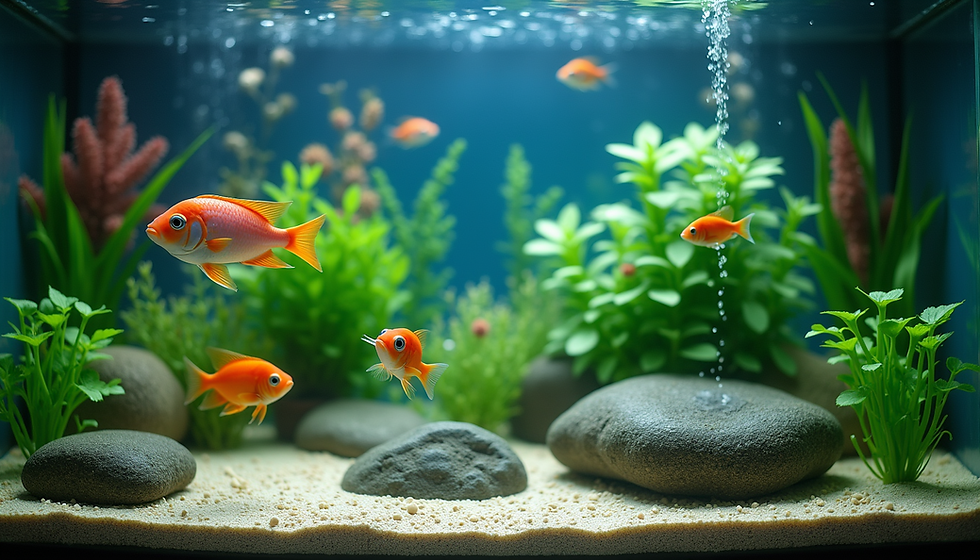DIY: CO2 systems for planted tanks.
- Blessings Aquarium

- Dec 12, 2023
- 2 min read
Aquarium enthusiasts understand the importance of a balanced ecosystem for their aquatic plants. Carbon dioxide (CO2) plays a crucial role in the health and growth of these plants, which is why a DIY CO2 system is an invaluable addition to any planted tank. This article will guide you through creating your own CO2 system, ensuring your aquatic plants thrive in an optimal environment.
Why CO2 is Essential for Planted Tanks
Photosynthesis is the key to a plant's growth, and CO2 is a critical component of this process. In an aquarium setting, natural CO2 levels are often insufficient for plant growth. By supplementing CO2, you can boost plant health, leading to lush, vibrant foliage.
Materials Needed for a DIY CO2 System
A plastic bottle (2-liter works well)
Sugar
Yeast (baking yeast is sufficient)
Silicone tubing
Check valve
CO2 diffuser
Steps to Create Your DIY CO2 System
Mix the Ingredients: Fill the plastic bottle with warm water, leaving a few inches at the top. Add sugar (about one cup per two liters of water) and stir until dissolved. Introduce a teaspoon of yeast into the mixture. The yeast will ferment the sugar, producing CO2.
Assemble the Delivery System: Secure the silicone tubing to the bottle's opening, ensuring an airtight fit. Install the check valve along the tubing to prevent water from backflowing into the bottle.
Position the CO2 Diffuser: Place the end of the tubing into your tank, attaching it to the CO2 diffuser. The diffuser breaks the gas into fine bubbles, allowing efficient absorption by the water.
Maintenance: Monitor the system regularly. The yeast-sugar mixture will need replacing every few weeks to maintain consistent CO2 levels.
Conclusion
A DIY CO2 system is a cost-effective and efficient way to provide your aquatic plants with the necessary carbon dioxide. It enhances plant growth, contributing to a healthier and more vibrant aquarium ecosystem. With simple materials and a bit of creativity, you can significantly improve the environment of your planted tank.
Remember, the key to a successful aquarium is balance. While CO2 is beneficial, monitoring and adjusting levels based on plant response is crucial. With this DIY approach, you'll not only enjoy a thriving aquatic garden but also the satisfaction of a well-maintained ecosystem.
For more details visit our YouTube channel : Blessings Aquarium




Comments